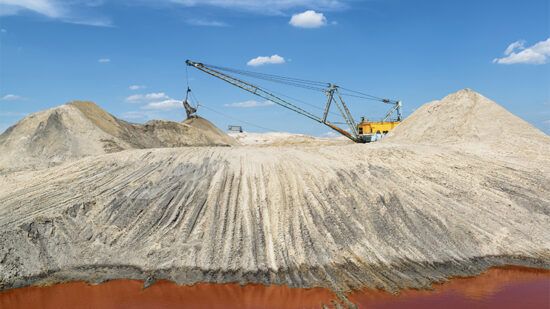Cement is an essential material for our modern economy. With its low cost and durable characteristics, we struggle to see a scenario where it can be replaced at scale – meaning this essential material will have a continued role in the low carbon economy of the future.
From a fundamental perspective, the cement industry has witnessed a significant transformation over the past decade. After years of focusing on volume growth and expanding market footprints, the global financial crisis of 2008-2009 permanently altered the landscape for the industry, as a full recovery in demand never materialised.
Faced with poor returns, the cement industry began to consolidate midway through the 2010s. This marked the start of market discipline, reflected in consistent pricing power and a value-over-volume strategy for key cement corporates.
This pricing power was partly the result of the local nature of cement production. Cement naturally lends itself to an oligopolistic structure, and this ‘localness’ is a feature that differentiates cement from other cyclic commodities. While the cement industry was not immune to the major shocks experienced in recent years – namely Covid-19 and the collapse in construction activity, the energy crisis following the Russian invasion of Ukraine, and the subsequent spike in interest rates – the industry’s disciplined value-over-volume approach held firm, with resilient pricing able to offset these pressures.
The next decade will be another phase of evolution for the industry, as cement companies tackle the impact of carbon costs and the challenges of decarbonisation. This will transform the fundamentals of the industry again – leading to structurally lower volumes, steepening cost curves, even more localised markets, and more capacity rationalisation.
The importance of industry decarbonisation
Cement production is responsible for approximately 8% of global CO2 emissions, and the production of Portland cement – the most common type of cement – begins with the grinding of raw materials like limestone and clay into a fine powder called raw meal. The raw meal is then heated to a temperature as high as 1,450°C in a cement kiln.
Typically, cement plants use coal, petroleum coke, or natural gas to heat the kiln. The heating process alone accounts for around 40% of emissions in the entire production process. The remaining 60% comes from the chemical process: once the carbon released from the heated limestone goes through the kiln, it becomes a material called clinker – which is the key ingredient in cement. This is the most energy-intensive stage in cement production.
In order to decarbonise a cement plant, three main levers can be pulled. First, utilising alternative substances to reduce the energy consumption and CO2 emissions associated with cement clinker production. Next, use alternative energy sources to reduce CO2 emissions stemming from fuel combustion. Finally, deploy CCUS (carbon capture, use, and storage) technologies to capture unavoidable direct emissions coming from the calcination of limestone into cement clinker.
First-mover advantage for European leaders
Cutting down cement emissions not only makes environmental sense, but it is also an increasingly compelling financial opportunity – particularly in Europe. We expect first-mover advantages for cement companies able to decarbonise the fastest.
In terms of equities, industry fundamentals are under-appreciated by the market and not properly reflected in today’s valuations. European cement equities have particularly de-rated materially over the last five years – largely due to concerns around the decarbonisation pathway for a hard-to-abate industry. Within the cement industry, we continue to unearth compelling investment opportunities in today’s decarbonisation leaders, alongside entities with the potential to show more ambition and credibility in net-zero strategies.
One such example is Italian group Buzzi. We are engaging with the company as we see great potential for it to deliver meaningful carbon reduction through a reduced clinker ratio, higher use of alternative fuels, and increased investments in CCUS technology. If Buzzi can invest in CCUS and achieve a 70% emission reduction by 2040, it could be able to charge a green premium and partially pass through carbon costs. This was a key point of our recent dialogue with company management.








